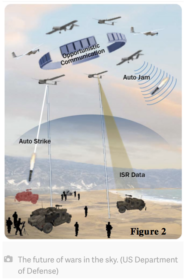Choosing the right law school can be compared to buying a new car. To be satisfied, there are certain features you need, some that you want and some that you don’t necessarily care for. It can be a long, grueling process at times, but that’s why we’re here to help! Here are a few factors aside from rank and reputation, which tend to be objective, you should consider when choosing a law school:
LOCATION
Though going to law school in the jurisdiction in which you want to practice is not a hard and fast rule, it is something important to consider. Before you go scrambling, I myself was unsure of what bar I wanted to take when applying to law school, but was still very sure that I wanted to attend school in Michigan for other reasons such as the ones below. If you can foresee where you want to live after graduation, then it is commonly suggested that you aim to attend a law school in that same geographic area. The reason this is suggested is that there are larger alumni networks, networking opportunities and job opportunities via Career Services.
SPECIALIZED CURRICULUMS
Many people start law school unsure of what type of law they want to practice, but some people already have an idea of what avenue they’d like to pursue. If you already have an idea of the area you’d like to practice, finding a school that specializes in that type of law is important because it will be a better fit for you. This will help you to focus more on your overall goal and may impress future employers by showing your commitment to that field early on. If you are unsure of what type of law you’d like to practice, check out the schools’ websites to learn more about the specialized curriculums they offer to see whether they align with your interests and goals. If the law school has a variety of courses, that will give you the opportunity to get your feet wet in a variety of areas. Also, not all schools offer a joint degree program, such as a JD-MBA, this would be something to inquire about before committing to a school.
SCHOLARSHIP & COST
Law school is not cheap. Tuition, fees, room, board, books and other expenses come at a price that tends to be higher than undergrad. When deciding between choosing a school that is higher ranked compared to one that offered a scholarship, it is important to consider the actual differences between the schools. If you are interested in both and they are similar in programming and rank, I would suggest taking advantage of the scholarship offered. Also, inquire with the Admission’s Office to see if the law school offers a scholarship based upon first-year academic performance (GPA), as this is becoming more common rather than offering scholarship up front. Without a scholarship, public, in-state law schools tend to be the least expensive, but this can vary.
CAMPUS
Are you interested in attending a law school that is located on a large college campus, or something smaller and more intimate? Are you looking for a more social or focused student environment? You can only learn so much from websites and word of mouth. If possible, visit the school before committing and take a tour of not only the law school but the whole campus. This will give you the opportunity to explore housing options and help you to decide whether you want to live on-campus or off-campus as well as check out the extracurricular activities that are available.
ALUMNI NETWORK
Law schools provide data about where their graduates work on their website. Connecting with recent alumni can give you insight into a program you may be interested in, tell you about the school’s culture from a more objective standpoint and you may even meet someone who could help you out in the future when looking for employment.
CAREER RESOURCES
Does the school have a Career Services Office? What is there placement rate and do they place students in the geographical location that you are interested in working in? Does the school have an online job posting board exclusive to the students at that school? Does the school offer on-campus interviewing where law firms and corporations send representatives to the school to interview their students exclusively? If you plan to work in the same region as your law school, does the school have a method for connecting students with alumni who are working nearby in your area of interest? Though full-time employment may seem far off, your ‘3L self’ will thank you if you ask these questions before you commit to a school your 1L year.
FACULTY
In law school, attending office hours and getting to know the faculty is something I strongly suggest as those connections will become very useful to you in the future when applying for jobs or the bar exam. A faculty with assorted backgrounds will have diverse points of view and experiences. Connecting with a faculty member who has a specialty that you’re interested in may lead to a career, you never know. School websites and the Association of American Law Schools’ Directory of Law Teachers are great resources to find information about faculty. Also, be sure to consider the student-faculty ratio. It is not favorable to have a full-time faculty to full-time student ratio of 1 to 30, or greater according to the ABA Standards: Rules of Procedure for Approval of Law Schools.
FAMILY & FRIENDS
Don’t forget to consider the people who helped you to get where you are today. Some people are great at spreading their wings and traveling across the country for school and others prefer to stay close to those whom they’re comfortable with. You need to decide what is best for you!
Cross-posted from: https://lawpreview.barbri.com/how-to-choose-the-right-law-school/








 the same ultra-precise route repeatedly, enabling automated up-close inspection of power lines, bridges, pipelines and wind turbines, as well as real-time, multi-sensor mapping of farms right down to individual plants.
the same ultra-precise route repeatedly, enabling automated up-close inspection of power lines, bridges, pipelines and wind turbines, as well as real-time, multi-sensor mapping of farms right down to individual plants.
